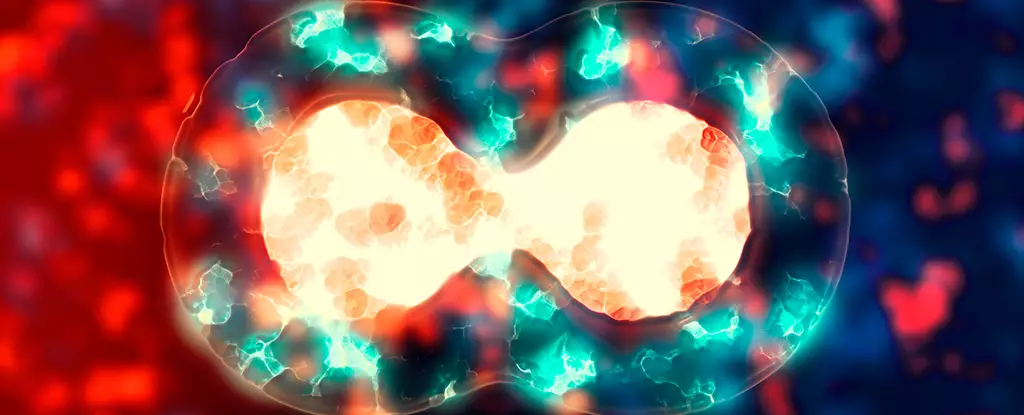In the labyrinth of human development, early gestation has long been shrouded in mystery. A nascent field of research is beginning to shed light on this critical period and its potential role in the onset of schizophrenia, a debilitating neurological disorder. Recent findings spearheaded by a group at Harvard Medical School led by clinician-scientist Eduardo Maury reveal that two specific genetic deletions may occur during this formative stage, setting the stage for future psychiatric issues. This revelation has profound implications, not only for understanding the roots of schizophrenia but for devising strategies aimed at early intervention and prevention.
Schizophrenia, with its insidious onset typically in early adulthood, affects roughly one in every three hundred people globally. The complexity of this disorder stems from an intricate tapestry woven from both genetic predispositions and environmental triggers—factors that manifest through traumatic experiences or infectious agents in one’s formative years. What if some of these influences were not inherited at all, but rather acquired while the brain is still developing? Researchers have begun to fervently explore this captivating possibility.
Decoding Genetic Missteps
The latest investigation has expanded the conversation about inherited versus acquired genetic factors in schizophrenia, challenging long-held beliefs about the disorder’s origins. Through a meticulous analysis of genetic samples from approximately 25,000 individuals, Maury and his team identified alterations in two particular genes: NRXN1 and ABCB11. Contrary to classical genetic mutations that pass from parent to child, these findings emphasize that some mutations might arise during gestation, affecting the developing fetus’s neural architecture.
The concept of ‘copy number variations,’ a term that refers to anomalies in the number of copies of a particular gene segment, plays a pivotal role in these discoveries. This kind of genetic error can either take the shape of deletions or duplications, acting as a double-edged sword in the continuum of developmental biology. While certain variants may be inherited, Maury’s work suggests that researchers must also interrogate somatic mutations—those that emerge after fertilization. Somatic mutations, unlike germline mutations that are present in all cells, may lead only to neural or blood cells carrying the genetic aberration, complicating our understanding of how schizophrenia can develop in the absence of a parental link.
Connections to the Placenta and Brain Development
The origins of schizophrenia have been historically complex, with research indicating that significant gestational challenges could give rise to neurodevelopmental disorders. Insights from previous studies in 2017, which utilized lab-grown brain models, hinted at possible pathways through which their disorganized cellular arrangements could foster conditions like schizophrenia. In 2021, attention was drawn to specific genes active in the placenta that correlated with increased risks of developing the disorder during detrimental pregnancy conditions.
Now, with Maury’s team pinpointing NRXN1 and ABCB11, we are presented with compelling new threads to the narrative. NRXN1, previously associated with schizophrenia when inherited, demonstrates significant relevance in these new findings. Particularly intriguing is the association of deletions of NRXN1 in schizophrenia cases that were absent in control groups, suggesting that these genetic errors may be more common in affected individuals than previously assumed.
Conversely, the role of ABCB11 remains enigmatic. By observing deletions of this gene in patients resistant to antipsychotic treatments, researchers have inadvertently illuminated a potential avenue for future explorations. It beckons the question: How many more elusive genetic pathways need our attention before we can form concrete interventions in the early stages of brain development?
Implications for Early Detection and Prevention
The timely discovery of these genetic vulnerabilities amplifies an urgent call for action within the mental health community. Given that many psychiatric issues related to schizophrenia may emerge from occurrences during gestation, there lies a ripe opportunity for early screening methodologies and preventative measures. Can we, for instance, develop strategies to screen pregnant women for environmental factors that could exacerbate the risk of genetic deletions like those identified?
The ethical ramifications are equally profound. Identifying at-risk pregnancies could delineate a fine line between proactive care and the daunting prospect of labeling unborn children with potential psychiatric disorders—the implications of which cascade through societal and familial lenses. While the quest for knowledge has a noble pursuit, understanding how such insights should be applied is equally critical in navigating the complex tapestry of human health and psychology.
As we stand at the precipice of this new frontier in schizophrenia research, it becomes increasingly clear that the intersection of genetics and development during gestation offers fertile ground for groundbreaking insights. By delving deeper into the enigma of genetic mutations occurring before birth, we may one day hold the keys to preventing the emergence of this challenging condition altogether.


Leave a Reply